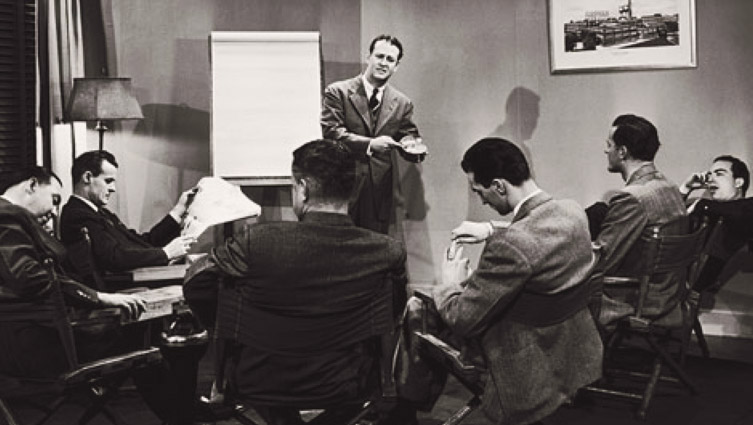There was an interesting article in The New York Times Magazine recently about the nature of meetings, how we continue to have them despite our deep disliking of them, and some ways that people are trying to deconstruct meetings to make them more effective. The title of the article? “Meet is Murder”(!)
I have spoken about the bane of meetings for a long time, citing their amazing time wasting properties that decrease, instead of increase, productivity. There are better ways to get things done, but today, as it has been for hundreds of years, many companies continue to use this technique as a course of action. A meeting invite is sent, a select number of people sit around an oblong boardroom table in a closed room, someone states the agenda, and some people speak and others don’t. After the meeting you get a recap, which sums up the meeting in a few points and outlines responsibilities for “next steps”.
I can see you yawning already.
Unfortunately, since there hasn’t been a generally accepted replacement for meetings, if you have to hold one, stick to these two principles: don’t waste other people’s time, and move the action forward.
Don’t waste other people’s time. The key is to be smart about deciding who gets to be in the room. If the meeting has been curated properly, and the people around the table have sufficient insight on the agenda at hand, then the meeting has potential to turn into an interesting discussion that will provide insight to the group and move the team forward. However, many times only people with the requisite titles get to sit around the table, and some people are so far removed from the issue that there’s nothing valuable discussed which you couldn’t read in a more informative memo written by someone else.
Once you have the right invite list, you’ll want to ensure that the time used in the meeting is well spent. So to move the action forward in meetings:
- Keep it brief. Set a time limit. There are suggestions that standing helps keep time.
- Keep it small. If you can, don’t invite more than 5 people to a meeting. Anything more and it becomes a presentation.
- Start with the answer. Decide what you want to achieve before you work through the agenda. The danger is getting stuck on minor points.
- Brief the group prior. Do not use the time to recap the issue. Everyone attending should know what is being discussed and the context around the conversation before the meeting.
- If someone is not contributing, don’t invite them again. You can do without a mute body in the room.






